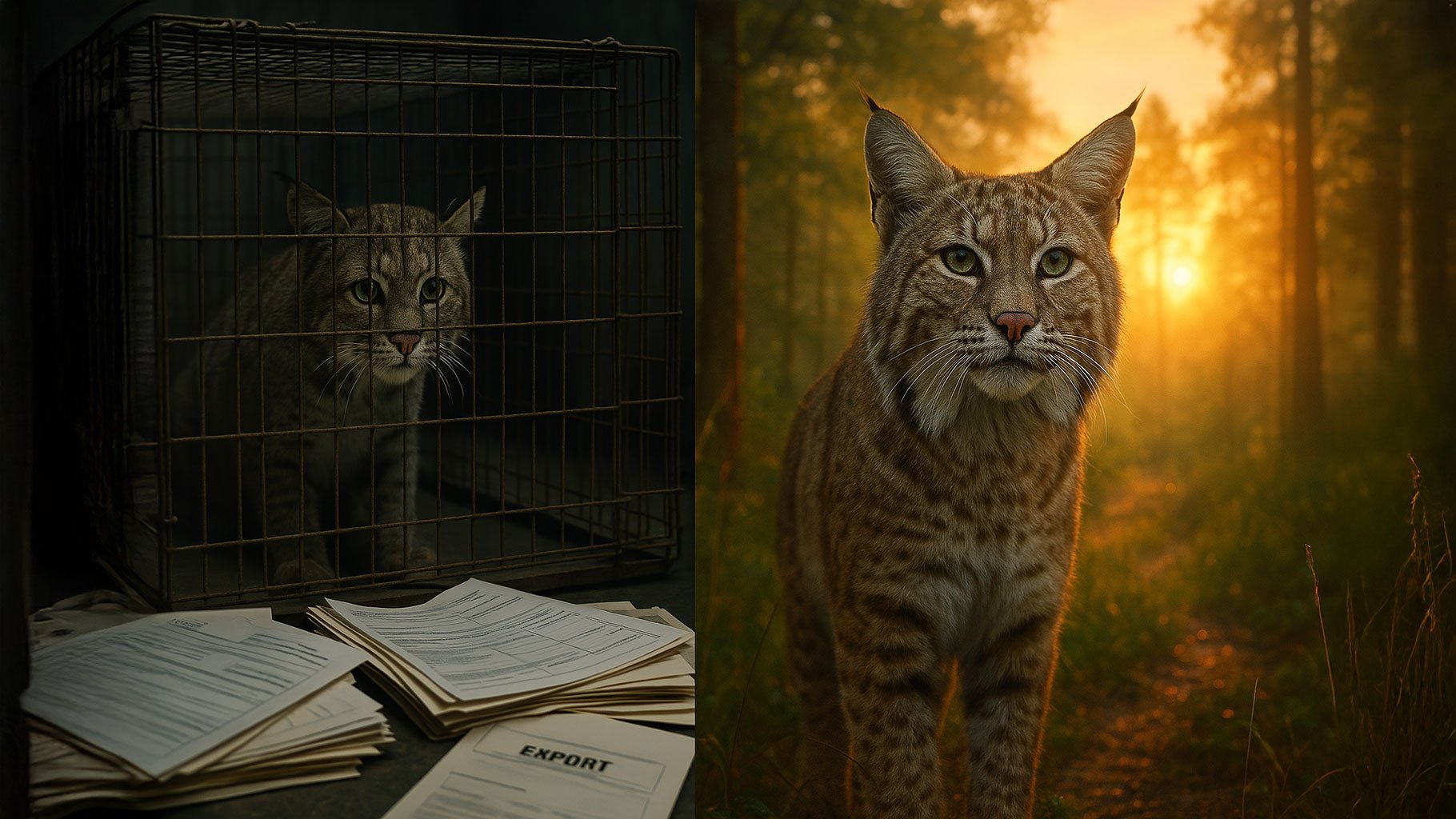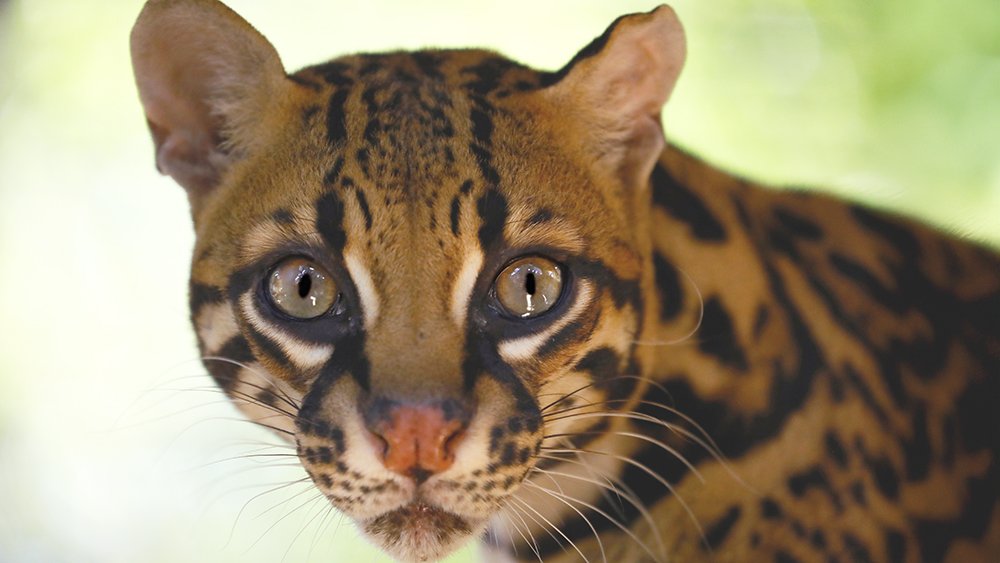Ocelot Facts
Ocelot
Common Name: Ocelot
Kingdom: Animalia
Phylum: Chordata (Vertebrata)
Class: Mammalia
Order: Carnivora
Family: Felidae
Genus: Felinae (Leopardus)
Species: pardalis
Fun Facts: Ocelots use similar habitat and show similar abundance patterns to Jaguars and Pumas. Population densities seem to increase with rainfall and decrease with latitude, with the highest densities in tropical areas. In captivity, ocelots have lived more than 20 years, as compared to 7-10 years typically in the wild.
Ocelot
Population: The ocelot has a wide distribution, from northern Argentina to the southwestern United States, being the most common felid species in most of the tropical and subtropical habitats of the Neotropics; it is listed as "Least Concern" by the International Union for Conservation of Nature. During the early 1960’s to mid-1970’s, the ocelot was the spotted cat most heavily exploited by the fur trade. Some estimates suggest that as many as 200,000 animals were taken annually for this purpose. A much lower number were imported for pets. With the advent of CITES, this number fell to average of 24,600 skins per year and has effectively ceased since the late 1980’s. As a result of this lack of hunting pressure, there are signs of re-colonization and recovery. At the lowest density estimates (.2 km2), there were probably 800,000 ocelots in the forested portions of South America alone. Today, true numbers are thought to be 1.5 to 3 million animals and increasing.
Size and Appearance: The ocelot is much larger than its cousins the margay and the oncilla, although they bear a striking resemblance. Ocelots weigh between 28-35 pounds, stand 16-20 inches tall, and reaches lengths of 28-35 inches. It's coat tends to be more blotched than spotted, and the chain-like blotches and spots are bordered with black and have a light colored center. These markings run the entire length of the cat. The base color varies between whitish or tawny yellow, reddish gray and gray. The belly is white, and the backs of the ears are black with a central white spot.
Habitat: The ocelot occupies a wide spectrum of habitats types, ranging from scrublands to tropical rain forests. What all these habitats have in common is a well-structured vegetative cover. Ocelots have been recorded in mangrove forests, coastal marshes, savanna grasslands, thorn scrubs, and tropical and subtropical forest.
Distribution: Southern Texas and every country south of the U.S. except Chile.
Reproduction and Offspring: After a gestation of 79-85 days they produce a litter of 1-2 young. Kittens weigh approximately 8.5 ounces at birth. Females reach maturity at 1½ years and males at 2 ½ years. Ocelots become independent at approximately 1 year of age, but seem to be tolerated in their natal range for up to 2 years.
Social System: Ocelots are solitary and territorial. Females defend their exclusive territory, which can be as much as 9 square miles. Males have a much larger territory ranging upwards of 35 square miles which overlap that of 1 or more females. Ocelots communicate by use of scent markings which tells the males when she is ready for mating and by vocal communications such as meows and yowls (in heat).
Hunting and Diet: The ocelot is a terrestrial hunter and most active during the night (nocturnal). While the mainstay of it's diet are nocturnal rodents including mice, rats, opossums and armadillos, they will sometimes take larger prey such as lesser anteaters, squirrel monkeys and land tortoises. Ocelots will also take advantage of seasonal changes and the abundance of fish and land crabs during the wet season. Occasionally, they will hunt birds and reptiles. However, the majority of prey items for this cat weigh less than 1-3% of its body weight.
Threats: Ocelots have a small litter size, one of the longest gestations and growth rates among the small felids, and a high infant mortality rate. Add this difficulty in sustaining it's own population with deforestation, habitat destruction and poaching and the survival of this beautiful little species becomes even more difficult.
Status:
IUCN: Least Concern
CITES: Appendix I
USFWS: Endangered
Felid Tag Recommendation: A regional studbook is present for ocelots maintained in North America, with a target population of its Species Survival Plan (SSP) of 150 individuals. In 2001, when the SSP was begun, most of the ocelots within the SSP were of unknown or hybrid ancestry, referred to as generic and managed as an exhibit and education population. The SSP also targeted the Brazilian ocelot, Leopardus pardalis mitis, as a known subspecies for zoos to attempt to import and to be managed separately from the generic ocelot population. Both the generic and Brazilian populations are managed for maximum breeding in order to grow the Brazilian population as well as to sustain sufficient animals for exhibition. Efforts continue to import additional founder pairs of Brazilian ocelots through the SSP’s Brazilian Ocelot Consortium, a bi-national agreement which provides funding and resources to Brazilian non-governmental organizations involved with research conservation and education.
Zoo scientists continue to develop innovative reproductive strategies with ocelots involving artificial insemination, in vitro fertilization, sperm and embryo cryopreservation and embryo transfer. Applying these reproductive tools, healthy offspring from founder animals housed in Brazilian zoos have been produced while improving the genetic management of Brazilian ocelots currently maintained in U.S. zoos.
https://www.youtube.com/watch?v=2AtwPh0iKW0
See Conservation Work Funded By Big Cat Rescue here:
All conservation insitu work: https://bigcatrescue.org/insitu/

























